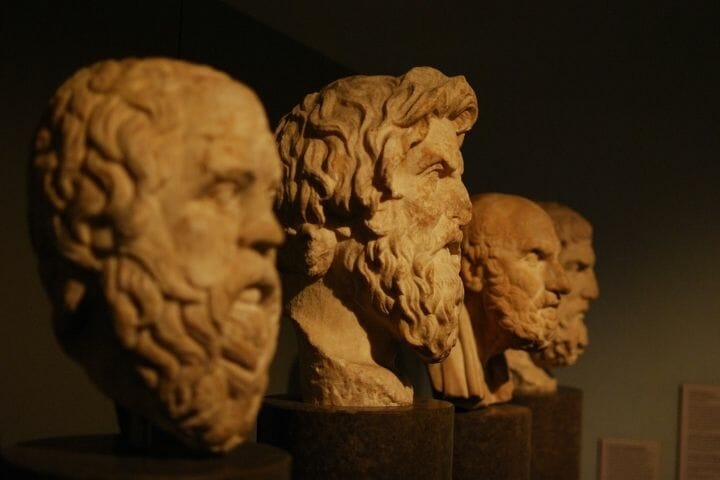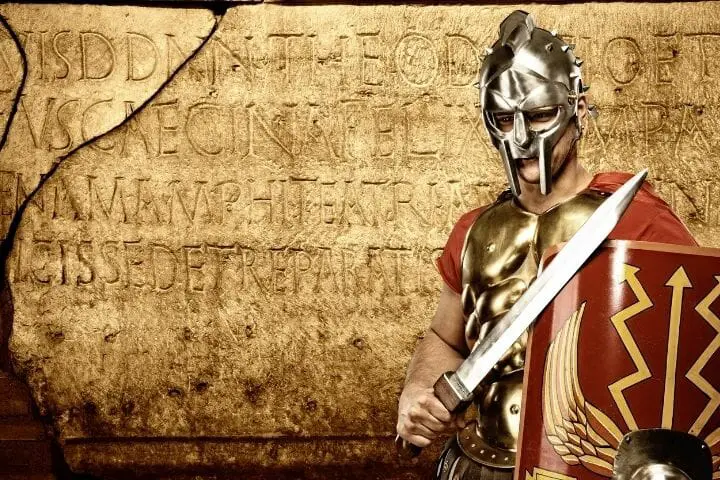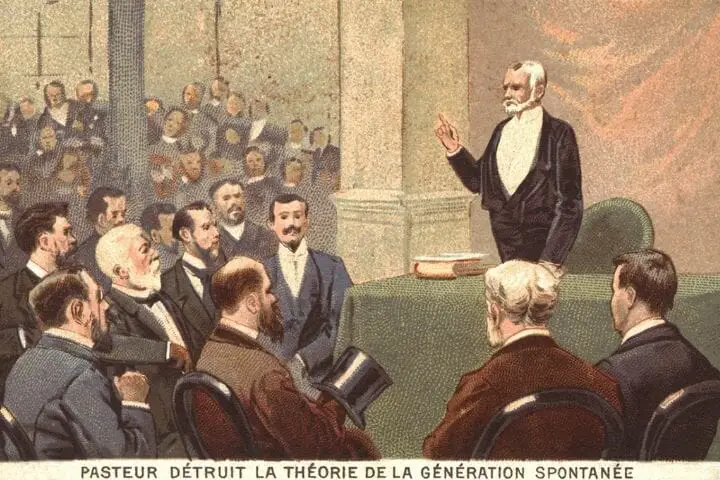The practice of healing has existed since the dawn of man, but the definition has changed with time. Let’s discuss the evolution of medicine and caregiving.
Contents
The evolution of medicine shows that society has changed its approach to illness from prehistoric times to the present.
In the 19th century, humorism was thought to be the cause of the disease, but the germ theory of disease later replaced it. It led to effective treatments and cures for many diseases.

Military doctors advanced trauma treatment and surgery during wartime as the world was ravaged by great wars.
In the 19th Century, Public Heath measures developed because the rapid growth of cities required the improvement of sanitation.
Many advanced research centers opened in the early 20th century. These advancements, along with radiography and genetics, led to modern medicine and new career opportunities for physicians and nurses.
This article discusses the evolution of medicine and caregiving. Understanding how medicine has evolved is the only way to understand where it will go next.
#1. Prehistoric Medicine
When you think of medicine, you usually imagine a hospital, a doctor’s office, and pills that make you feel better. But thousands of years ago, these were not there. Prehistoric medicine refers to when people were unable to read and write.
No one knows precisely what prehistoric people knew about the body of human beings. But you can have some guesses with the limited findings of anthropologists.
The burial practices of prehistoric people prove that they know something about the structure of human bone. Researchers have found bones that were stripped off the flesh and piled together.

There was also evidences that some prehistoric people practiced cannibalism which proves that they knew something about the inner organs of the human body and where lean tissue or fat is there in the human body.
Many Archaeologists studied the bones is found in prehistoric graves and found that they were healthy but badly set bones which indicates that most of the communities in the prehistoric period did not know to set bones properly.
The prehistoric people treated health problems like migraine epileptic seizures by drilling a hole in the skull of the human body. The first known trepanning operation was carried out in 5000 B.C.E.
Medicine men known as witch doctors were available in the prehistoric period. The tribal people used to seek help from witch doctors when they had injuries or sickness.
The prehistoric people had their first experience of medicine by eating soil. Some soil has healing properties, which they use for treating wounds.
Role Of Caregiver
The caregivers used medicinal herbs in prehistoric times to treat their loved ones. For instance, they used yarrow to reduce the bleeding of their loved ones. They even apply on the wounds, cuts, and abrasions for healing.
Marrow is another herb that caregivers used during the prehistoric period to cleanse the colon of their loved ones.
#2. Ancient Greek Medicine
The Greek Civilization started around 700 BCE and continued till 600 C.E. Medicine was not an essential subject in the ancient days of Greece.
Pythagoras, a Mathematician in the 6th century B.C.E., brought the theory of numbers into natural science. The followers of Pythagoras believed that numbers had special meanings, mainly numbers 4 and 7.
According to those followers
- 7×4 =28 is the length of the menstrual cycle and the lunar month
- 7×40=280 is the full days for a full-term pregnancy.
The followers even believe that babies born in the seventh month have better health than babies born in the eighth and ninth months.
The Greeks in the ancient period were curious about what things existed and why they existed. The curiosity helped them to develop maths and science.
The Greeks developed a Medical school in 700 BCE in Cnidus and began observing sick patients. Alcmaeon worked at that medical school and wrote on medicine. He was the first person to wonder about the internal cause of illness.

Two important factors encouraged ancient Greeks to promote health, i.e., military activity and sports. In wars, the doctors of Greece worked on healing wounds and removing foreign bodies from the soldier. The Olympic games in Greece raised the need to stay healthy and prevent injury.
Empedocles said that every natural matter consists of four things, i.e., earth, water, air, and fire. The idea of these four elements prompted many Greek doctors to establish a theory of four humors or liquid. The four humors are blood, phlegm, yellow bile, and black bile.
According to those doctors, these four humors should be balanced for keeping your health in good condition. This theory became quite popular in the 17th century. But after 2000 years, scientists concluded that the theory was false.
Hippocrates of Kos founded the Hippocratic school of medicine and made a significant contribution to medicine which even exists today. He and his followers wrote the Hippocratic Corpus, which consists of 60 medical works of ancient Greeks.
Two Greek philosophers, Aristotle(384-322 B.C.E.) and Plato(424-348B.C.E) concluded that a human body had no use in later life. This thinking allowed many Scholars to investigate inside the human body systematically.
Sometimes those scholars cut the bodies of alive criminals. It concluded that the brain controls the movement of limbs and blood flows through the veins. Thucydides(460-395 B.C.E.) concluded that prayers were ineffective in treating plagues and epilepsy.
Role Of Caregiver
The caregivers of ancient Greeks used to treat the wounds of their loved ones using thread and dress with sponge or linen soaked in wine, oil, honey, or seawater.
They encourage their patient to eat foods like celery which they believe have anti-inflammatory properties. The caregivers prefer to give barley soup with vinegar and honey to treat the chest diseases of their loved ones.
#3. Ancient Roman Medicine
The Roman empire started around 800 B.C.E. and existed for 12,000 years. Ancient Roman wars motivated the provision of health care facilities in the empire. They developed their medicine from mainly two things, i.e., the needs from the battlefield and learning from Greeks.
The Romans were first introduced to Greek medicine when Archagathus of Sparta came to Rome in 219 B.C.After that, many scientists and doctors from Greece arrived in Rome as prisoners of war. Later they arrived in Rome to earn a good amount of money.
The Romans allowed these scientists and doctors to continue their treatment of physical and mental disorders. But Roman didn’t like the idea of dissection of corpses. So the researchers of Greece could not do much research on human anatomy.

The people of Greece had a spiritual belief in medicine, and the same concept continued in Rome. The Romans adopted a Cult of Aesculapius’s healing system by the 3rd century B.C.E., which took the name from the Greek God of healing. Initially, the Romans built shrines, but later they introduced spas and thermal baths in the presence of doctors.
In 431 BC Plague occurred in Italy. So people of Rome started building the temple of the Greek God Apollo under the belief that God had healing powers. They even took the sacred snake from the Greeks. The snake had escaped but later appeared on Tiber Island, where Romans built a sanctuary for the snake. Many people come to the sanctuary because they believe it has healing power.
The people of Rome found various libraries and Universities in Greece after conquering Alexandria. Greece had different learning centers and multiple places to research medicine.
The Roman doctors did not have permission to dissect corpses.
So they have limited knowledge about human anatomy. However, the soldiers on the battlefield often had wounds, and the doctors had to treat them with their limited knowledge. In this way, they learned more about the body of human beings. Here are some key highlights of their medical practice:
Battlefield
The Roman leaders started giving importance to public health after observing the soldiers on the battlefield. The Roman Surgeons had their practical experience mainly on the battlefield. They carried a tool kit that used to contain catheters, scalpels, forceps, and arrow extractors.
The surgeons used to sterilize this equipment in boiling water before using them. They perform the surgical procedure by using opium and scopolamine to relieve pain.
Additionally, they cleaned the wounds of soldiers by utilizing vinegar. The surgeons did not have effective anesthetics for complicated surgical procedures.
Midwives
The Romans had midwives who used to treat women during labor, delivery, and after the child’s birth. The medical instruments include a birth stool with four legs with arm and back support. It had a crescent shape opening for the delivery of the baby.
Hospitals
The hospitals allow people to stay and rest and have better chances of recovery rather than depending on supernatural powers to do miracles.
Role Of Caregiver
The caregivers of Romans used herbal medicines to treat various diseases of their loved ones. For instance, they give egg yolk to their patient for treating dysentery.
The caregivers gave garlic to their loved ones to treat heart problems. If their loved ones suffered from fever, cough, indigestion, and sore throat, they give silphium.
#4. Modern Medicine
Modern medicines started to emerge in the 18th century. During the 19th century, there was rapid development in industrial and economic growth. Consequently, the way people lived and led life changed, which led to many new and dreadful diseases.
For instance, as manufacturing processes developed, numerous work-related diseases became common, like lung disease, phossy jaw, and dermatitis.
The cities started expanding rapidly, and some health issues like cholera became quite common. People began moving from one place to another and carried diseases like yellow fever.

At the end of the 19th century, 30 percent of death of people were because of infection. But it reduced to 4 percent by the end of the 20th century.
The researchers discovered ways to identify and treat illness and understand the working of bacteria and viruses.
For instance, Louis Pasteur developed a technique for pasteurizing fluids. He said that diseases like smallpox, cholera, and tuberculosis occur when germs enter the human body and believe that vaccines can prevent such diseases.
Important Milestones of the Last 3 centuries.
| Year | Event |
| 1800 | The British chemist Humphry Davy discovered the anesthetic properties of laughing gas, i.e., Nitrous oxide. |
| 1816 | A French Doctor, Rene Laennec, invented a Stethoscope and its use in diagnosing chest infections. |
| 1818 | British Obstetrician James Blundell performed a blood transfusion in a hemorrhaged patient for the first time. |
| 1842 | An American Surgeon, Crawford Long, gave a patient ether anesthesia during a surgical procedure. |
| 1849 | Elizabeth Blackwell became the first qualified female doctor in the United States and promoted the education of medicine in females. |
| 1867 | A British Surgeon named Joseph Lister successfully used carbolic acid (a phenol) to clean wounds and surgical instruments for the first time, which reduces postoperative infections in people. |
| 1879 | Pasteur developed a vaccine against chicken cholera for the first time. |
| 1881 | Pasteur developed the anthrax vaccine. |
| 1882 | Pasteur prevented rabies in a nine-year-old boy named Joseph Meister using a post-exposure vaccine. |
| 1890 | A German physiologist named Emil Von Behring developed antitoxins and developed vaccines for tetanus and diphtheria. |
| 1895 | A German Physicist Wilhelm Conrad Rontgen discovered X-rays. |
| 1897 | The chemists working in a Bayer A G German company produced the first aspirin. |
| 1901 | An Australian Biologist Karl Landsteiner identified different blood types and made their classification. |
| 1901 | A German Pathologist named Alois Alzheimer identified Alzheimer’s disease. |
| 1903 | Willem Einthoven invented Electrocardiogram. |
| 1906 | Fredrick Hopkins discovered vitamins and said vitamin deficiency was the primary cause of rickets and scurvy disease. |
| 1907 | Paul Ehrlich developed a chemotherapeutic cure for sleeping sickness. |
| 1921 | Frederick Banting and Charles Herbert discovered insulin. |
| 1923-27 | The Scientists used the first vaccines for diphtheria, whooping cough, and tuberculosis. |
| 1928 | Alexander Fleming discovered penicillin |
| 1929 | Hans Berger discovered electroencephalography. He was the first person to record waves of the brain. |
| 1932 | Gerhard Domagk developed a cure for streptococcal infections. |
| 1935 | Max Theiler developed the first vaccine for yellow fever. |
| 1943 | Willem J.Kolff built the first dialysis machine. |
| 1946 | Alfred G. Gilman and Luis S. Goodman discovered the first effective chemotherapy drugs. |
| 1952 | Jonas Salk invented the first polio vaccine. |
| 1953 | Dr. John Gibbon invented the first heart-lung machine. |
| 1954 | Joseph Murray did a kidney transplant for the first time. |
| 1960 | A group of Americans developed the technique of Cardiopulmonary resuscitation. |
| 1965 | Harry Meyer developed the rubella vaccine. |
| 1967 | Christiaan Barnard carried heart transplants from one human being to another. |
| 1980 | Dr. Baruch Blumberg developed a hepatitis vaccine. |
| 1998 | James Alexander Thomson derived the first human embryonic stem cell line. |
| 2000 | The researchers completed a draft human Genome project which may lead to new medications for treating genetically based diseases. |
| 2001 | Dr.Kenneth Matsumura created bioartificial liver. |
| 2005 | Jean Dubernard carried out a partial face transplant in women whose face was disfigured because of a dog attack. |
Caregiver Role
The primary caregiver helps loved ones dress, feed, toilet, get in and out of bed, and give medications at the proper time. Additionally, they prepare nutritious meals and encourage them to exercise, which is quite essential for the health of their loved ones.
Some caregivers leave their job and put aside their hobbies and friends to care for their loved ones. Some people hire professional caregivers who are well trained and provide medical care like giving insulin and others to the patient.
#5. Sports Medicine
Sports medicine is the branch of medicine that focuses on treating injuries that result from physical activity. It includes athletic injuries from games or injuries from physical activities like walking or swimming.

Sports medicine is now considered a modern specialty, but its roots date to the 5th century when athletes started understanding the importance of protecting their bodies during games.
Key Milestones in Sports Medicine
| Year | Event |
| 1025 | Avicenna published The canon of medicine. |
| 1569 | Gerolamo Mercuriale published De Arte Gymnastics |
| 1611 | Santorio Santorius studied how activities affect the metabolism of the human body. |
| Mid-Late 1600s | Bernardino Ramazzini established the connection between movement and the health of the human body. |
| The 1800s | August Bier and Arlie V. Bock studied how exercises affect blood circulation in the human body. |
| 1912 | A meeting was held in Germany to create the Association International Medico Sportive to provide medical care to participants in Olympics. |
| 1928 | The International Congress of sports medicine was formed to prevent injuries in athletics. |
| 1954 | The American College of Sports medicine was established to develop sports medicine. |
| 1991 | The American Medical Society For Sports Medicine is dedicated to sports medicine research. |
Wrap Up
The practice of medicine has changed a lot from prehistoric times. Today we have advanced machines to detect diseases or treat infectious diseases. I hope this article was informative, and please don’t forget to share it with others searching for this information.
You can also ask us your queries related to the evolution of medicine and caregiving. We will be happy to answer all your queries.

